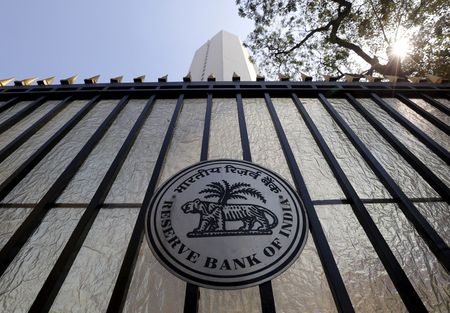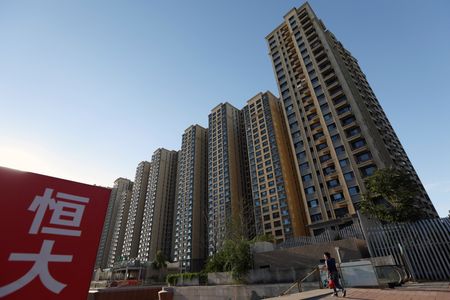(Reuters) – The Reserve Bank of India (RBI) kept its key lending rate at a record low on Friday, as expected, as it sought to support economic growth even as inflation edged higher in the wake of the Russia-Ukraine war.
The monetary policy committee held the lending rate, or the repo rate, at 4%. The reverse repo rate, or the key borrowing rate, was also kept unchanged at 3.35%.
“The conflict in Europe has the potential to derail the global economy caught in the crosscurrent of multiple headwinds. Our approach needs to be cautious, but proactive in mitigating the adverse impact on India’s growth and inflation,” RBI Governor Shaktikanta Das said.
The central bank, however, said it would restore the width of the liquidity adjustment facility corridor to 50 basis points, which was seen as a first step to move away from the ultra loose monetary policy embraced during the COVID-19 pandemic.
The RBI said the floor of the corridor would be the standing deposit facility rate, which was set at 3.75%, and the marginal standing facility rate at 4.25% will be the upper bound with the repo rate in between the two.
COMMENTARY
SUJAN HAJRA, CHIEF ECONOMIST AND EXECUTIVE DIRECTOR, ANAND RATHI SHARES & STOCK BROKERS, MUMBAI
“With today’s measures, the RBI has moved to a path of gradual increase of policy interest rate and phased withdrawal of liquidity. From a medium-term perspective, the measures are supportive of growth, price stability, and orderly development in the financial markets.”
SUVODEEP RAKSHIT, SENIOR ECONOMIST, KOTAK INSTITUTIONAL EQUITIES, MUMBAI
“The policy decisions are in line with our expectations on the repo rate and stance. The rate corridor has now effectively reduced to 25 bps, compared with 65 bps earlier. The SDF window will become the new floor at 3.75%, even as reverse repo rate is at 3.35%.”
“The policy has decidedly shifted away from being dovish. The RBI’s concern on inflation has increased significantly, especially with the FY2023 average inflation estimate revised up to 5.7% from 4.5%. The concern on growth is relatively lower in this policy, even as FY2023 GDP growth estimate has been lowered to 7.2% from 7.8%. Commitment has also been made to start withdrawal of liquidity from FY2023 and over the next few years.”
“This policy strengthens our view that the first repo rate hike will be in the August. We expect the stance to be changed to ‘neutral’ from ‘accommodative’ in the June policy.”
PRITHVIRAJ SRINIVAS, CHIEF ECONOMIST, AXIS CAPITAL, MUMBAI
“The RBI MPC review indicates a resolve to tackle high inflation and low growth setting this year. In terms of action, the LAF corridor has been narrowed to pre-pandemic level of 50 bps by introducing a new liquidity absorption tool, the SDF, at 25 bps below 4% policy repo rate. This will effectively increase overnight money market rates by 40 bps since erstwhile reverse repo rate at 3.35% is practically made redundant.”
“In terms of guidance, the language now has a phrase that speaks of focussing on gradual withdrawal in accommodation. This was backed up by the governor’s statement that the excess banking sector liquidity build-up as a result of liquidity infusion during the pandemic would be gradually reduced over a multi-year period.”
“Overall, the MPC’s review shows that the RBI is ready to steer monetary policy out of crisis-level accommodation. We expect 100-150 bps in repo rate hikes over the next 12-18 months to take real policy rate to neutral from about negative 2% currently.”
RADHIKA RAO, ECONOMIST, DBS BANK, SINGAPORE
“Among the key takeaways from the policy review was firstly the MPC’s caution over the growth trajectory, and worry over persistent inflation, which was underscored by a 60 bps cut in the growth projection and 120 bps increase in the inflation forecast, backed by a sharp $25 per barrel increase in the underlying crude oil price assumption.”
“Policymakers also acknowledged fluidity in the geopolitical situation and its spillover on the commodity universe. Secondly, a tweak in the guidance to acknowledge the need to start withdrawal of accommodation leaves the June rate review live for a change in the stance to neutral and explore rate hikes thereafter.”
“Next, the introduction of the Standing Deposit Facility and restoration of the LAF corridor to pre-pandemic levels marked another step towards normalisation. Lastly, besides the held-to-maturity restoration, markets still await clear signals on the shape and form of the central bank’s support for bond markets.”
RUPA REGE NITSURE, GROUP CHIEF ECONOMIST, L&T FINANCIAL HOLDINGS, MUMBAI
“Direct monetary tightening appears to be delayed because of the ongoing Russia-Ukraine war and the supply shock created by it. However, by increasing the inflation projection and by lowering the growth projection for FY23, the MPC has started sensitizing the market participants about the emerging challenges. By introducing the SDF as a floor of policy corridor and by restoring LAF corridor to pre-COVID-19 level of 50 bps, the RBI has intensified the process of liquidity normalisation.”
KUNAL KUNDU, INDIA ECONOMIST, SOCIETE GENERALE, BENGALURU
“We continue to expect the RBI to make the first rate hike move in June, failing which August would be a certainty. However, we fear that any delay in rate hike would force the RBI to possibly do a Fed (Federal Reserve) and start tightening at a much faster pace, choking the process of recovery.”
SAKSHI GUPTA, SENIOR ECONOMIST, HDFC BANK, GURUGRAM
“The RBI turned the policy corner, turning more hawkish in today’s policy. While the repo rate and stance were unchanged, the central bank normalised the policy corridor (with the introduction of SDF at 3.75%) and said it will focus on withdrawal of accommodation. Recognising inflationary risks, the RBI raised its inflation to 5.7% (up by 120 bps) and lowered its growth forecast to 7.2%.”
“The hawkish turn was warranted and it is likely that the central bank will change its stance to neutral in the coming policy, followed by a repo rate hike sooner than earlier expected. The 10-year bond yield is likely to move towards 7%-7.25% over the coming weeks.”
GARIMA KAPOOR, ECONOMIST – INSTITUTIONAL EQUITIES, ELARA CAPITAL, MUMBAI
“Amid increased uncertainty regarding the outlook for inflation and growth owing to the Russian-Ukraine crisis, the MPC decided to stay course on its pro-growth stance even as evolving global dynamics compelled an upward revision to its inflation projection and a return to pre-pandemic policy rate corridor.”
“With recovery in the Indian economy still at a nascent stage and risks to growth enhanced despite elevated inflation, we expect the MPC to move to a neutral stance in August policy and anticipate a repo rate hike in H2 of FY23. Amid inability to explicitly support the government borrowing program, the RBI enhanced HTM limit by 100 bps, which could calm the bond markets despite a sharp increase in inflation forecast.”
(Reporting by Nallur Sethuraman, Rama Venkat, Chandini Monnappa, Chris Thomas and Nivedita Bhattacharjee in Bengaluru; editing by Uttaresh.V)









